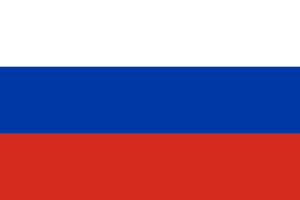Language/Russian/Grammar/Plurals
| ◀️ Noun Gender — Previous Lesson | Next Lesson — Numbers 1-10 ▶️ |
Hi Russian learners! 😊
In this lesson, we will delve into the fascinating world of plurals in the Russian language. As you may already know, the Russian language has a complex grammatical structure with six cases, and the same goes for plurals. In Russian, plural nouns are used when we talk about more than one thing, person or animal. So, let's dig in!
After mastering this lesson, these related pages might interest you: Use of the verb быть in the past, Russian Grammar → Russian Pronouns → Noun-Adjective Agreement, Gender Recognition & Future Tense.
Introduction to Plurals
As in many languages, plurals in Russian are simply formed by adding a suffix to the end of the noun. However, in Russian, the choice of suffix depends on various factors such as gender, declension, and sometimes even the specific noun ending.
To give an example, let's take the word "стол" (table) and "стул" (chair). To form the plural of these two words, we add the suffix "-ы" for masculine nouns and "-и" for feminine nouns. Thus, we get "столы" (tables) and "стулья" (chairs).
It may seem simple, but as we dig deeper, we'll find some exceptions and anomalies that make the Russian language even more exciting.
Plural Suffixes
As mentioned previously, the choice of plural suffix in Russian depends on various factors. Below is a table that summarizes the different plural suffixes according to gender, declension, and ending:
| Gender | Declension | Ending | Plural Suffix | ||
|---|---|---|---|---|---|
| Masculine | First | -о, -е, -ё | -ы | ||
| -й | -и | ||||
| other | -а | ||||
| Feminine | First | -а | -ы | ||
| -я | -и | ||||
| other | -ы | ||||
| Neuter | -а, -о, -є | -а/-я | |||
Note: є is a letter in the Ukrainian alphabet but not in the Russian alphabet.
Here are some examples to demonstrate how different plural endings are formed:
| Russian | Pronunciation | English |
|---|---|---|
| стол | stol | table (singular) |
| столы | stoly | tables (plural) |
| кот | kot | cat (singular) |
| кошки | koshki | cats (plural) |
| мыло | mylo | soap (singular) |
| мыла | myla | soaps (plural) |
Irregular Plurals
As with any language, there are exceptions to the rules. Some Russian nouns don't follow the typical plural formation rules, and will have an irregular plural form. Here are some examples of irregular plural nouns:
- год (year) - года (years)
- ребёнок (child) - дети (children)
- нож (knife) - ножи (knives)
- зуб (tooth) - зубы (teeth)
Note: ребёнок is spelled with ё, a letter in the Russian alphabet which represents the sound "yo" but is often replaced with е.
As you can see, the plural form of these nouns follows a completely different pattern and cannot be formed according to the usual plural formation rules. Therefore, it is best to memorize them separately.
Plural of Adjectives
In the Russian language, adjectives must agree with the noun they describe, and this agreement also extends to plural forms. Therefore, when forming the plural of an adjective, we also need to consider the gender and declension of the noun it describes.
For example, if we want to describe a group of "красивая девушка" (beautiful girl(s)), the adjective "красивая" (beautiful) needs to take the same plural suffix as the noun "девушка". Thus, we would end up with "красивые девушки" (beautiful girls).
Dialogue
Here's an example conversation to help you see plurals in context:
- Person 1: Это красивый дом. (This is a beautiful house.)
- Person 2: Да, но я предпочитаю красивые дома. (Yes, but I prefer beautiful houses.)
Interesting Facts
Did you know that Russian has a special suffix -ище that is used to form the meaning of "more than" or "the most"? For example, большой (big) becomes "большище" (bigger) or "самый большище" (the biggest).
Practice Exercise
Now, it's time to practice! Can you form the plural for the following nouns?:
- дом
- ручка
- машина
- ложка
- карандаш
Once you've formed the plurals, try to use them in sentences.
Final Thoughts
Learning plurals is an important part of mastering any language, and Russian is no exception. As we've seen, forming plurals in Russian can be tricky, but with practice and memorization, you'll be able to master it. To improve your Russian Grammar, you can also use the Polyglot Club website. Find native speakers and ask them any questions!
Sources
- Russian Plurals - Russian Language Lesson 11
- How to Express Plurality in Russian
- Russian grammar: Nouns in Nominative (plural) - Learn Russian for ...
➡ If you have any questions, please ask them in the comments section below.
➡ Feel free to edit this wiki page if you think it can be improved. 😎
Videos
Russian lessons – Lesson 7 – Russian plurals - YouTube
Russian Grammar: Singular and Plural Nouns - YouTube
Beginning Russian: Plural Forms of Nouns - YouTube
Russian Cases - Accusative Plural - YouTube
Other Lessons
- Gender
- How to Use be
- Present Tense
- Future Tense
- Tricky Adverbs
- Give your Opinion
- Personal Pronouns
- Порядок слов в русском предложении
- Imperative give an order
| ◀️ Noun Gender — Previous Lesson | Next Lesson — Numbers 1-10 ▶️ |

